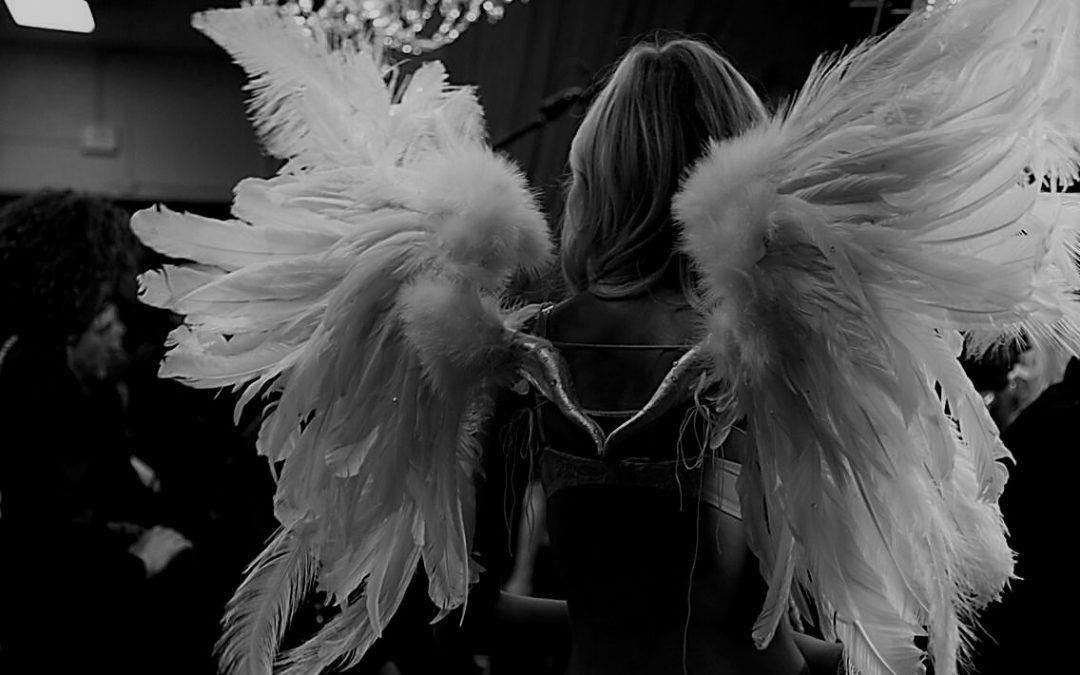Let’s uncover a few truths. Great lingerie can make a woman feel sexy. And you’ll pay (often a lot) to be part of that story. But it wasn’t always that way. A single brand elevated the price and position of intimate apparel, to unprecedented heights. Who was it and how did they do it?
The third article in this series on Luxury Branding, explains how a single brand tapped the ‘trading up’ phenomenon to establish a New Luxury brand and built a big-money empire.
Think back.
In the 50s and 60s, underwear was dowdy. Lingerie – if you ever owned any – was reserved for your honeymoon or an anniversary night. Never for every day. Fast forward and what do you have? It’s anything but boring, sometimes frivolous and often on show.
So what (or who) transformed an entire category by turning innerwear into outerwear, stretching practical into fashionable and in the process made sexy mainstream? The world’s best-known, bestselling and most profitable lingerie brand, Victoria’s Secret.
But that’s not how it started.
Targeted solely at men shopping for their wife’s underwear, its 1977 beginnings were a little odd. Despite that it grew, primarily on the back of its 42-page mail-order catalogue, but poor profitability pushed it toward bankruptcy.
In 1982 a new owner took the helm – one who sensed that lingerie had unrealised potential, as fashion.
Leslie Wexner discarded the unprofitable business model and revamped the brand to appeal to women. Stores quickly spread across the newly malled suburbs of America and the brand began its pattern of making a stir. The lingerie business was changing fast.
Five years after the purchase, Victoria’s Secret had transformed from a 3-store boutique into a 346 store retailer. Wexner had created a market where none existed.
He built a New Luxury brand.
PART Three: New Luxury – Trading up
For the majority of us, Old Luxury isn’t reachable. Never has, nor will be.
So instead, we’re trading up.
What does that mean? Authors Michael J. Silverstein and Neil Fiske noticed more and more people were choosing to pay a premium for a few high-end goods and sacrifice other parts of their lifestyle for the privilege.
Their 2003 book called “Trading Up” (see below), uncovered the phenomenon and they accurately predicted the growth of an ‘affordable’ luxury market across almost every category. They believed that people were:
“…willing, even eager, to pay a premium price for remarkable goods that we call – New Luxury – products and services that possess higher levels of quality, taste, and aspiration than other goods in the category, but are not so expensive as to be out of reach.”
How does it work? New Luxury items range from a few dollars to thousands. You trade up in 1-2 categories that are important to you and your self-worth, and your other (unimportant) purchases become selective. Across those categories, you trade down to the low-cost or private-label brand, or even go without.
According to Silverstein and Fiske:
“The combination of trading up and trading down leads to a disharmony of consumption … she may shop at Costco but drive a Mercedes, for example, or buy private-label dishwashing liquid but drink premium Samuel Adams beer.”
Translation? A disproportionate amount of your income is spent just in the category/s that hold great meaning to you. The rest means nothing, so you pay little.
What else? New Luxury brands defy the traditional (low) volume ceiling for premium products. By emotionally engaging with customers and connecting on a ladder of benefits, the…
“New Luxury ‘sweet spot’ enables them to move off the traditional demand curve and achieve high margins and high volumes at the same time.”
WOW.
High prices, increasing demand, big profits and loyal customers. Does that mean any non-traditional brand can go luxury or vice versa, that any luxury brand can launch its own affordable line? It depends.
Let’s uncover a few of Victoria’s Secret affairs to see what we can learn.
All body no brains? Never…
Early on, Wexner established an ethos of never underestimating his customer.
“Most of the women that I knew wore underwear most of the time, and most of the women that I knew I thought would rather wear lingerie most of the time, but there were no lingerie stores,”Wexner explained to Newsweek. “I thought if we could develop price points and products that have a broader base of customer, it could be something big.”
Victoria’s Secret filled the huge white space in the market that was unspoken for. It made lingerie mainstream and along the way pushed innovation, lifted quality, made seasonal changes and delivered a flawless customer experience.
New Luxury Lesson #1: You are not your customer. Push difference.
Leslie Wexner wisdom:
“Nothing is more annoying to me than hearing a buyer say, ‘I like it, but the customer won’t.’ I’ve been shopping for over forty years, and I’ve never overreached our customers. They stay with you if you pay them the compliment of acknowledging their good taste. They will reach, in virtually every category, if you create demand.”
Pushing against gravity
The 1994 introduction of the Victoria’s Secret Miracle Bra didn’t just boost the brand’s top (and bottom) line. Selling two million within the first year (ahead of the WonderBra launch), it was one of the brand’s first steps into higher – New Luxury – pricing and profit… and more importantly, it emotionally connected with something that was important to its customers.
The desire? A bigger bust size.
Victoria’s Secret understood that with underwear (just like fashion and cosmetics) you’re seeking to make a statement about who you are. Selecting lingerie is about selecting an attitude to express. That is priceless.
New Luxury Lesson #2 : Price is not tied to product. Untie the two.
Silverstein and Fiske wisdom:
Trading up “… is not about wanton self-indulgence, materialist lust, or thoughtless consumerism. It is about consumers buying a few goods that make a difference in their lives.”
Butts, boobs and bombshells
A Victoria’s Secret product represents fun, romance, fantasy, desire and love all in one. Wearing their lingerie, you can be transformed like Cinderella … from the ties of domestic life to one of the feathered Angels on the catwalk.
In 1995 the brand launched its now iconic fashion show, with legendary supermodels strutting in lavishly jewelled bras and feathered wings. It became a cultural moment. In just thirteen years Victoria’s Secret had become a $1.9bn company, with 670 stores. By 2013 the brand controlled 35 percent of America’s lingerie market (according to Forbes), with sales of over $6.6bn.
New Luxury Lesson #3: 360-degree branding. Create apostles.
Leslie Wexner wisdom: The brand appeal lies in the luxurious experience it gives you.
The (originally vampish) catalogue was completely overhauled and gorgeous, elegant (and relatable) super models were hired to grace its pages and catwalk, to walk its talk. The stores were revamped with fifty shades of pink, gorgeous fitting rooms, amazing customer experience and finally, were filled with a continually innovative range of products that pushed boundaries and had consistency of fit.
The best form of flattery
It’s natural that other brands have sought to repeat its success, but it won’t happen by simply repeating tactics. Simplistically, it could be said that lingerie’s growth was born from genuine differentiation and emotional engagement. But even that’s not really a sufficient explanation.
To qualify as a New Luxury brand, Silverstein and Fiske say:
“… it must connect with the consumer on all three levels of a ladder of benefits. First, it must have technical differences in design, technology or both. Second those technical differences must contribute to superior functional performance. It’s not enough to incorporate ‘improvements’ … Finally, the technical and functional benefits must combine – along with other factors – to engage the consumer emotionally.”
New Luxury Lesson #4: Build a brand bigger than products. Reinvent.
Leslie Wexner wisdom:
“[Victoria’s Secret] didn’t make any money,” he said, “but I saw ingredients in it. What if we mixed it up differently?” As an outsider to the lingerie category, he was free to invent a new way of approaching the products. He realised there was a void in the market between high-aspiration and high-volume brands; he saw opportunity in both, and they spelt New Luxury.
You may not have named it as ‘trading up’ to New Luxury, but if you’re honest, you trade up every day, across different areas of your life and often for unexpected and counterintuitive reasons.
You possibly even believe that the items you buy help you realise your aspirations and alleviate your stresses, but, for the most part, you’re not fooled that such things (no matter the price) will solve your problems or take the place of essential needs.
But none the less, thousands of newspaper ads, catalogues, and televised fashion shows have convinced you that buying Victoria’s Secret products will boost your confidence and enhance your appeal.
That’s the real secret that’s luring you in…
* * *
From Bust to Boom
Foundation wear for a New Luxury brand
In their seminal book ‘Trading Up: Why Consumers Want New Luxury goods and How Companies Create Them,” authors Michael J. Silverstein and Neil Fiske explain that New Luxury goods cannot be created with traditional methods.
Instead, New Luxury creators follow these eight practices:
- Never underestimate customers
- Shatter the price-volume demand curve
- Create a ladder of genuine benefits – technical, functional and emotional
- Escalate innovation, elevate quality, and deliver a flawless experience
- Extend the price range and positioning of the brand
- Customise value chains to deliver on the ladder of benefits
- Use influence marketing and seed success through brand apostles
- Continually attack the category like an outsider
New Luxury products and services are priced at a premium, but they must inspire an emotional connection and possess higher levels of quality, taste and aspiration than other goods in their category. In order to pay the New Luxury premium price, customers will cut back on their spending (ie trade down) in areas they don’t care as much about.
Trading up, according to the authors, allows companies to sell products at higher prices than conventional goods and in much higher volumes than traditional luxury goods.
* * *
This is part of a 3-part series, on Luxury Branding: Part 1 – Part 2 – Part 3
NOTE: This post originally appeared as an article ghostwritten for a client and was published in Professional Beauty (Aust) magazine.




